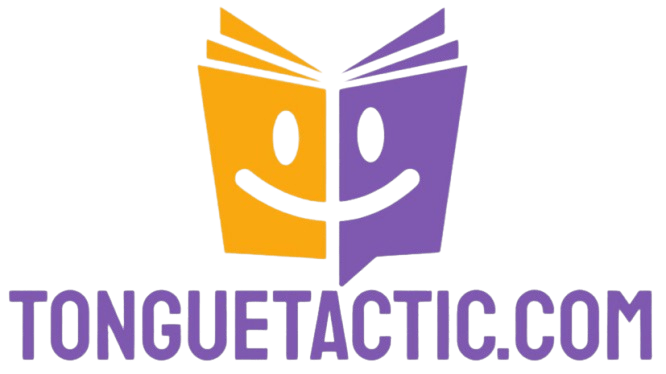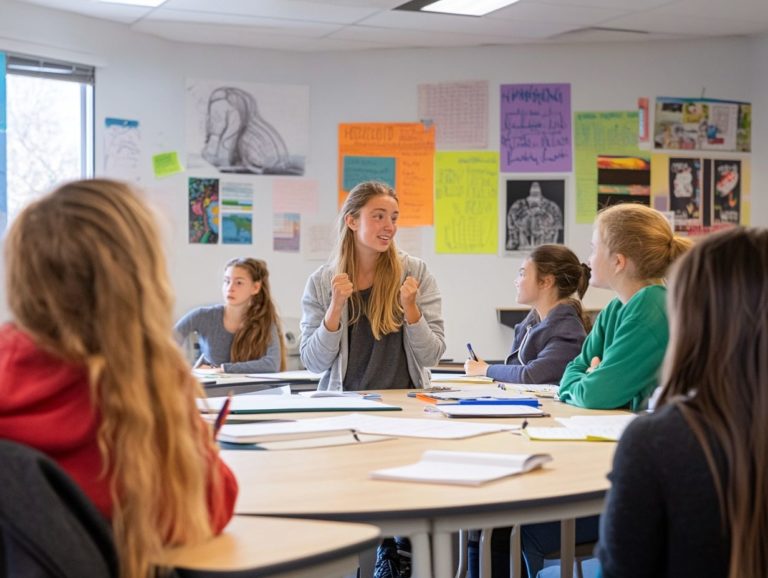the role of feedback in language learning courses
Feedback is crucial in language learning. It boosts your performance and keeps you engaged!
It enriches your experience and increases motivation. Discover the different types of feedback now formative and summative and learn how to integrate them into your language courses.
You ll find strategies for delivering timely and constructive feedback. Learn about the important role technology plays in this process and how to assess its impact through real-life case studies.
Curious about how feedback can transform your learning experience? Let s dive in!
Contents
- Key Takeaways:
- The Importance of Feedback in Language Learning Courses
- Types of Feedback in Language Learning
- Effective Feedback Strategies for Language Learning
- Implementing Feedback in Language Learning Courses
- Measuring the Impact of Feedback on Language Learning
- Frequently Asked Questions
- What is the importance of feedback in language learning courses?
- How does feedback impact student learning in language courses?
- What are the different types of feedback used in language learning courses?
- How can teachers provide effective feedback in language learning courses?
- Can feedback in language learning courses be automated?
- What are the benefits of incorporating self-assessment along with feedback in language learning courses?
Key Takeaways:
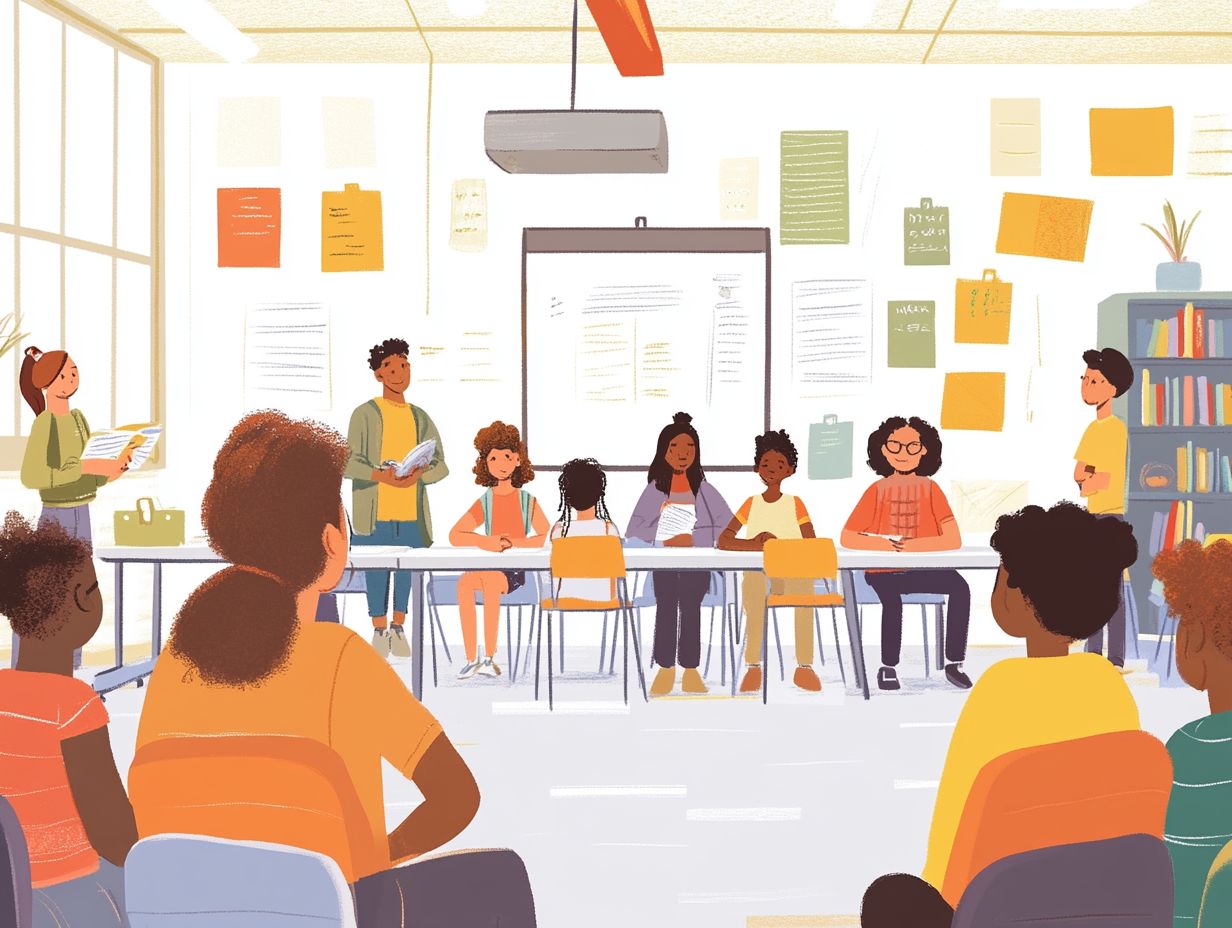
Feedback is crucial for enhancing learning in language courses by providing timely and specific guidance.
Formative feedback offers guidance throughout the learning journey, while summative feedback assesses your performance at the end of an instructional unit.
Effective feedback strategies include being encouraging and constructive, incorporating technology, and regularly evaluating progress.
The Importance of Feedback in Language Learning Courses
Feedback plays a vital role in language learning courses. It greatly enhances your performance and engagement.
It serves as an essential tool for educators, allowing them to provide guidance through formative and summative assessments.
With effective feedback mechanisms, educators can customize teaching strategies to meet your learning objectives. This nurtures your independence and motivation.
As Hattie & Timperley emphasize, feedback fosters a dynamic loop that hones language skills. It encourages self-assessment and reflection.
How Feedback Enhances Learning
Effective feedback elevates your learning experience. It provides actionable insights that enhance your engagement and refine your language skills.
Both oral and written feedback are essential to this journey. Verbal encouragement during discussions boosts your confidence and motivates you to practice speaking more.
Written feedback serves as a valuable reference. You can revisit it to deepen your understanding of key concepts.
By integrating strategies like peer review and self-assessment, feedback becomes a powerful tool for nurturing a growth mindset.
When educators provide thoughtful feedback, you re more likely to engage deeply with the material. This significantly enhances your overall language development.
Types of Feedback in Language Learning
Understanding the different types of feedback in language learning is essential. It influences your performance and the effectiveness of assessments.
Feedback generally falls into two primary categories: formative feedback and summative feedback.
Formative feedback offers guidance throughout your learning journey. Summative feedback assesses your performance at the end of a course.
Each type serves a unique purpose in facilitating language acquisition. Educators can customize their approaches to best support your development.
Formative Feedback
Formative feedback is an ongoing process throughout your learning journey. It allows educators to provide real-time insights crucial for correcting errors.
This approach helps identify areas where you might struggle. It cultivates a dynamic learning environment for immediate adjustments.
Consider tools like online quizzes or instant polling. They provide instant feedback about your understanding.
Engaging in peer assessments or group work transforms formative feedback into a two-way street. It encourages reflection on your performance and boosts motivation.
This cycle of reciprocal feedback enhances your engagement and leads to improved learning outcomes.
Summative Feedback
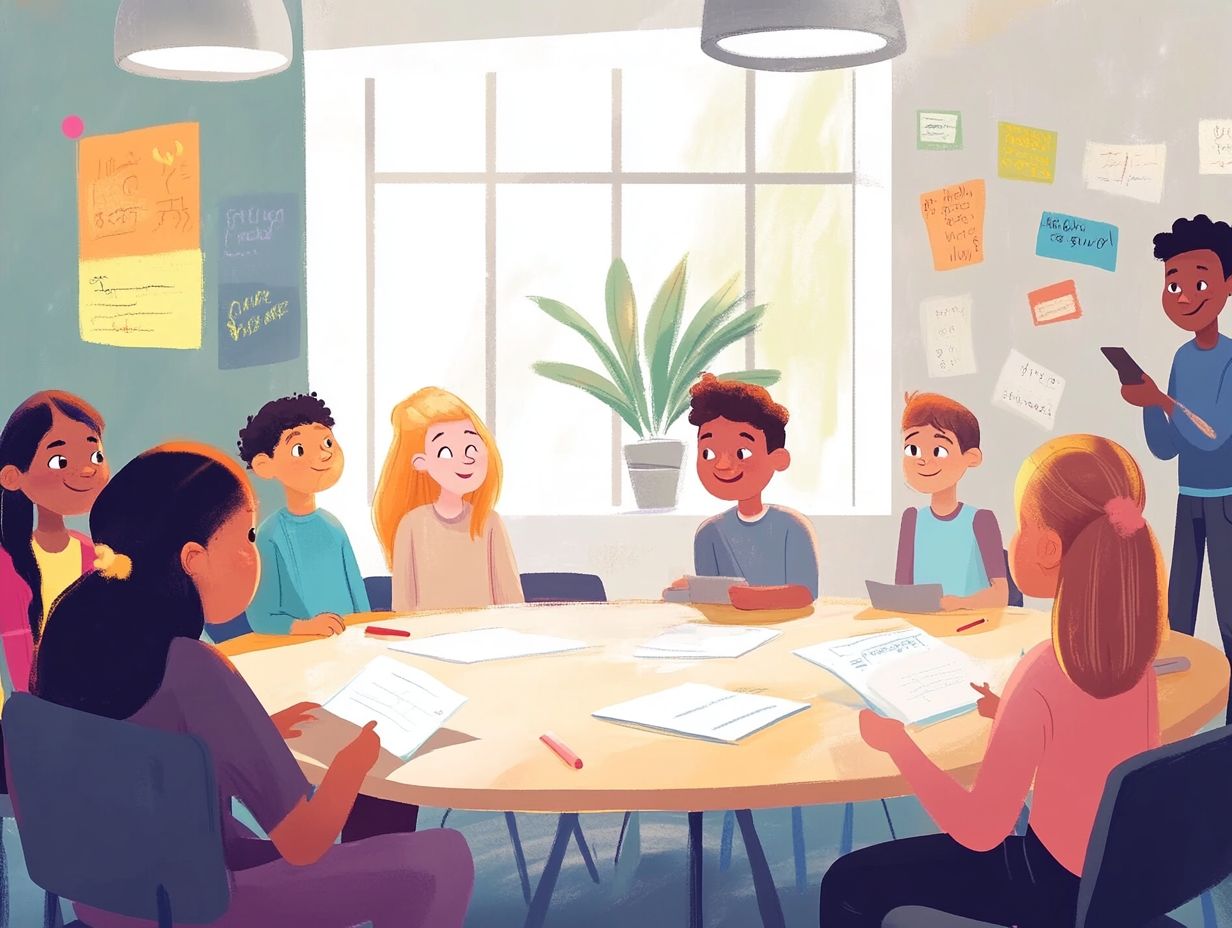
Summative feedback serves as a thorough evaluation at the end of a learning phase. It helps you assess how well you ve mastered language skills and whether you ve met your learning goals.
This type of feedback is essential for educators. It provides valuable insights into your overall performance, showing both your strengths and the areas needing improvement.
Standardized tests or final exams are effective assessment tools. They give teachers a clear picture of how well you can read, write, speak, and listen in the language.
Projects or portfolios also provide a comprehensive view of your abilities. They showcase not just your final results but also your learning journey along the way.
Such assessments shape future teaching strategies, ensuring that you receive the necessary support to achieve your language learning objectives.
Effective Feedback Strategies for Language Learning
Implementing effective feedback strategies is crucial for enhancing language learning experiences. They directly impact your motivation and skill development.
By embracing these strategies, you can create a more enriching educational journey that boosts your overall progress.
Timely and Specific Feedback
Timely and specific feedback is crucial. It shows your strengths and highlights areas for improvement, especially in grammar and vocabulary.
This feedback helps you focus on what you do well and what needs work. When you receive feedback promptly, it allows you to make immediate adjustments in your learning.
This proactive approach instills accountability and enables you to take charge of your learning experience. As you receive clear and constructive guidance, you’ll feel more motivated and better equipped to master key language skills.
This ultimately leads to greater learner autonomy and growing confidence in your abilities. Don’t miss out on opportunities to improve your skills!
Encouraging and Constructive Feedback
Encouraging and constructive feedback supports your behavior and fosters language development. It helps you reflect on your progress and stay motivated.
<pThoughtful feedback can significantly boost your morale, making you more open to taking risks in your learning journey. This positive reinforcement celebrates your achievements and guides you toward improvement without feeling discouraged.
Balancing praise with constructive feedback is key. Praise boosts confidence, while constructive insights guide improvement, making your learning experience both enjoyable and enriching.
Together, these elements create an environment where you feel valued and empowered to thrive.
Implementing Feedback in Language Learning Courses
Implementing feedback in language learning courses requires utilizing various feedback mechanisms and instructional technologies. These should be tailored to elevate the learning experience for your students.
By carefully integrating these tools, you can create a more engaging and effective environment that truly supports their language acquisition journey.
Incorporating Feedback into Lesson Plans
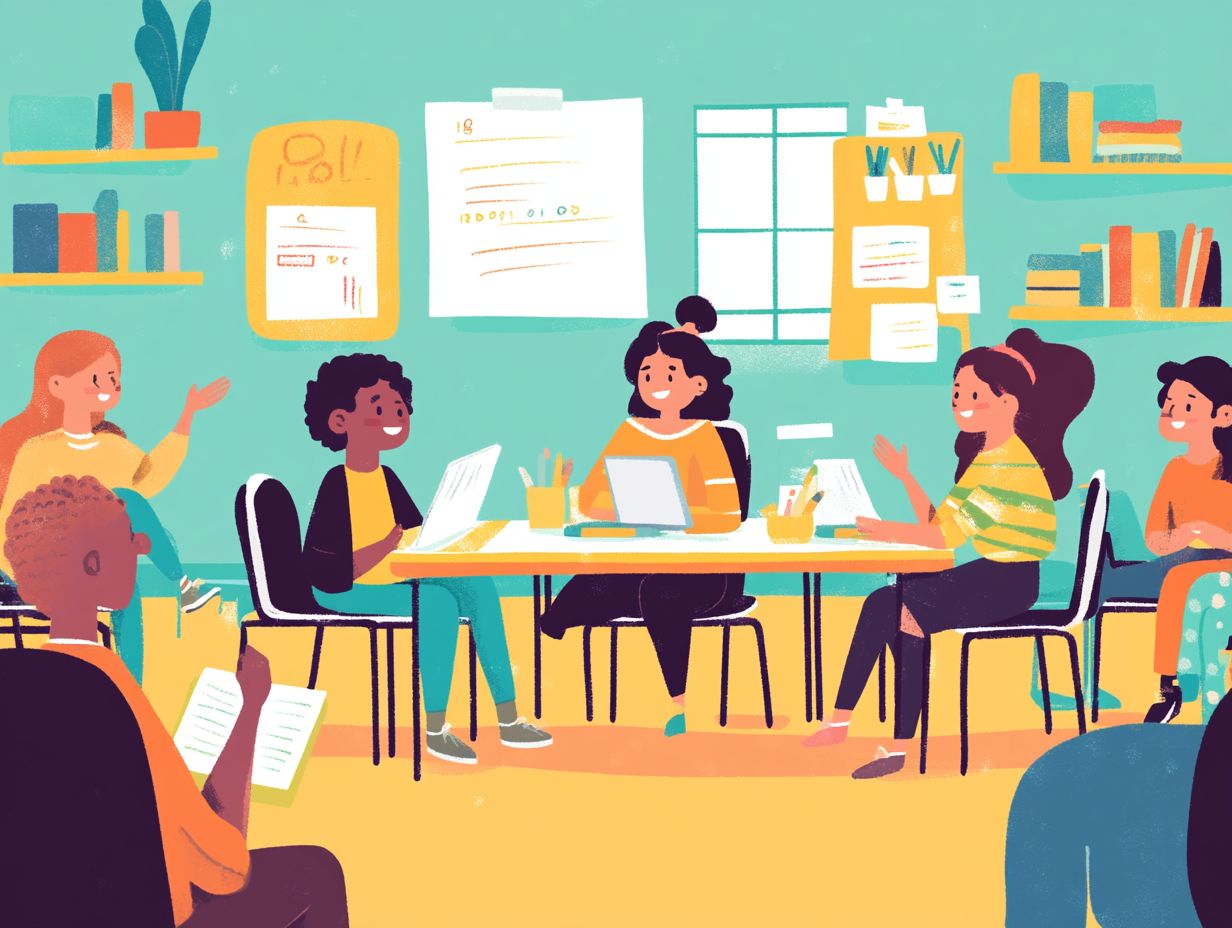
Incorporating feedback into your lesson plans is essential for developing instructional strategies that maximize student engagement and enhance learning outcomes.
By strategically timing feedback during lessons, you can create a dynamic environment where students feel supported and motivated. For example, providing immediate feedback after group discussions allows learners to reflect on their understanding in real-time.
Utilizing varied formats such as peer-to-peer exchanges or digital annotations caters to the diverse learning styles in your classroom. It’s crucial that this feedback aligns with established learning objectives, ensuring students see the connection between their efforts and progress.
This connection ultimately paves the way for their academic success.
Using Technology for Feedback
Using technology for feedback provides you with a suite of auto-correct tools and real-time options that elevate your language learning experience.
These digital platforms often include features like interactive quizzes, peer review systems, and analytics dashboards. All these are designed to streamline the feedback process.
For instance, applications that incorporate game-like elements make learning more engaging while providing immediate insights into your performance.
Collaborative tools allow you to share your work and receive constructive criticism from peers and instructors. This creates a nurturing and supportive learning environment.
Integrating educational technology into your language instruction enhances feedback strategies and empowers you to take charge of your learning journey. This makes your progress visible and manageable.
Measuring the Impact of Feedback on Language Learning
Measuring feedback’s impact on language learning is essential for assessing progress and achieving proficiency.
Understanding how feedback influences your journey illuminates areas for improvement and reinforces successful strategies. This guides you toward mastery in the language.
Evaluating Progress and Adjusting Feedback as Needed
Evaluating your progress and adjusting feedback are crucial for an effective language learning framework. This ensures you receive optimal support throughout your journey.
Ongoing evaluation allows educators to tailor instructional strategies to meet diverse needs. For example, if a teacher notices you struggling with pronunciation, they might provide targeted feedback or suggest additional resources.
Self-assessment helps you reflect on your strengths and areas for improvement. This fosters a sense of ownership over your educational progress.
Educators can enhance their approach by incorporating peer feedback sessions. This encourages you to engage with classmates work, creating a richer, more collaborative learning environment.
Real-life Case Studies: Success Through Feedback
Case studies and success stories provide insights into how feedback shapes language development. They highlight strategies educators have employed to improve student outcomes.
Imagine a language instructor introducing peer feedback sessions into her curriculum. This innovative approach boosted engagement and provided varied perspectives on language use.
Another instance involves a program that used technology, allowing students to record their speech and receive immediate feedback from peers and instructors.
These examples underscore best practices such as fostering collaboration and using technological tools. They emphasize the need for feedback that is timely, constructive, and relevant.
By examining these strategies, you can refine your feedback methods, enhancing the effectiveness of language learning experiences.
Frequently Asked Questions
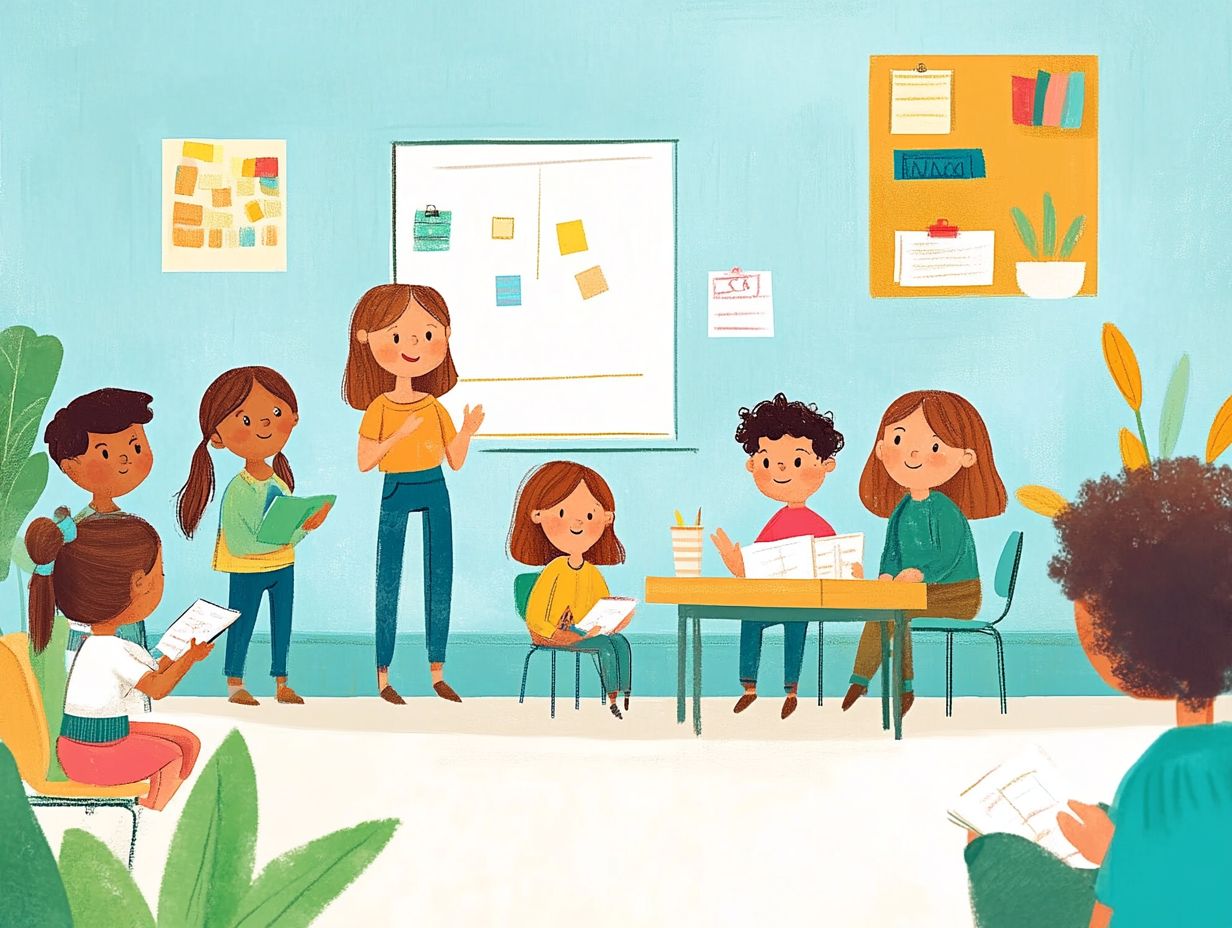
What is the importance of feedback in language learning courses?
Feedback is crucial as it allows students to receive constructive criticism and correct mistakes promptly. It also motivates and encourages continuous learning and improvement.
How does feedback impact student learning in language courses?
Feedback provides students with a clear understanding of their strengths and weaknesses. It helps identify areas needing improvement and allows focus on specific language goals.
What are the different types of feedback used in language learning courses?
- Written feedback: Comments on assignments.
- Verbal feedback: Given through face-to-face conversations.
- Peer feedback: Provided by classmates.
How can teachers provide effective feedback in language learning courses?
Great feedback in language learning should be specific, timely, and directly linked to learning goals. It should be constructive and supportive, encouraging students to develop their language skills.
Can feedback in language learning courses be automated?
Yes, you can automate feedback in language courses with various online tools. These platforms offer instant feedback on grammar, vocabulary, and pronunciation, helping students practice independently.
What are the benefits of incorporating self-assessment along with feedback in language learning courses?
Combining self-assessment with feedback allows students to reflect on their progress. This strategy promotes active learning and encourages students to take charge of their language journey.
Start incorporating these strategies today for better language learning outcomes!
